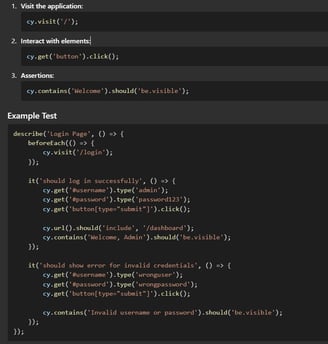Comprehensive Guide to Cypress
Mastering Web Testing with Scenarios and Commands
12/29/20242 min read


Professional Guide for Cypress Programmers
Introduction to Cypress
Cypress is a powerful and modern end-to-end testing framework built specifically for modern web applications. It enables developers and QA engineers to write reliable, scalable, and maintainable tests with ease.
Getting Started
Installation

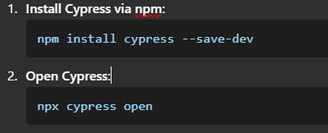
Folder Structure: After running Cypress for the first time, it creates the following structure:
cypress/
fixtures/: Contains mock data.
integration/: Where your test files reside.
plugins/: Extend or modify Cypress's behavior.
support/: Custom commands and reusable logic.
Configuration
Cypress configuration is managed via cypress.config.js or cypress.json:


Writing Tests
Anatomy of a Test
A typical Cypress test consists of three parts:
Best Practices
Test Organization
Describe Blocks: Use describe to group related tests.
It Blocks: Keep individual test cases short and specific.
Custom Commands
Reuse common actions by adding custom commands in cypress/support/commands.js:
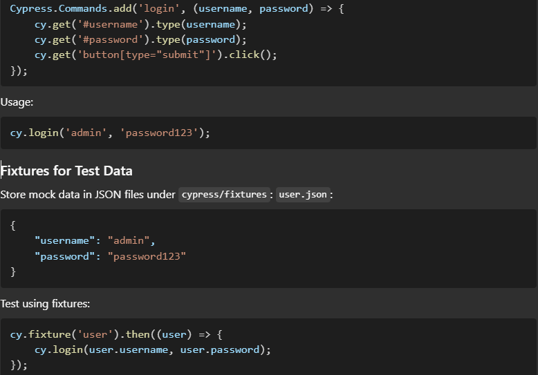

Avoid Hardcoding
Use environment variables for configuration:
Set environment variables in cypress.config.js:


Additional Cypress Commands and Examples
Interacting with Elements
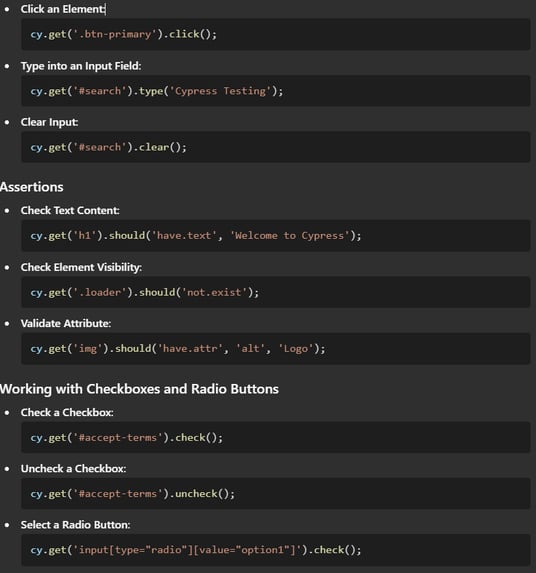

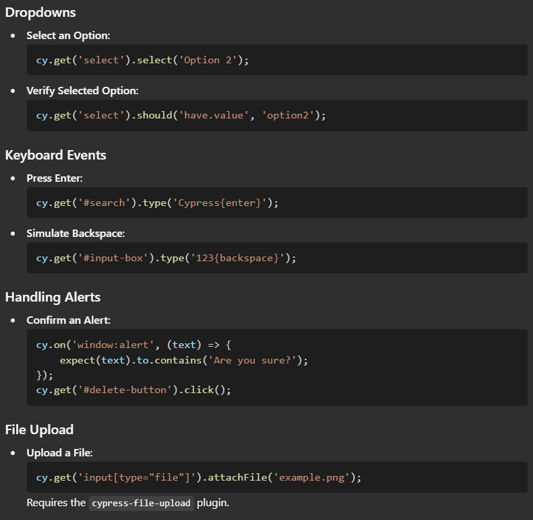

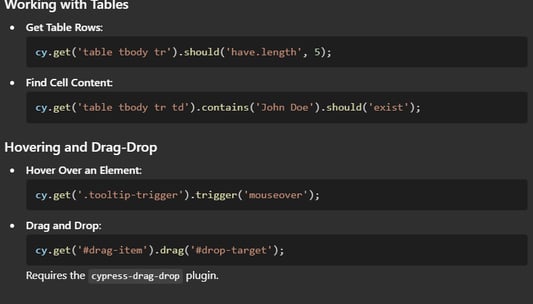

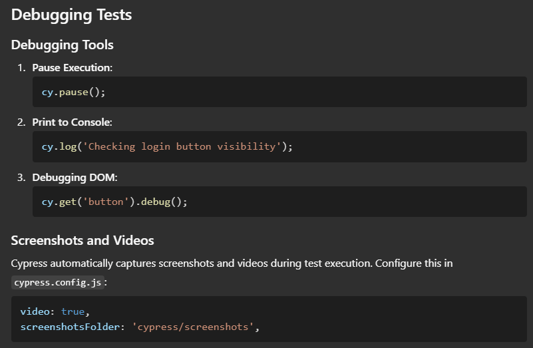

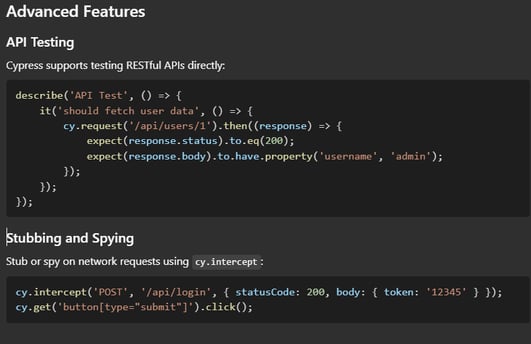

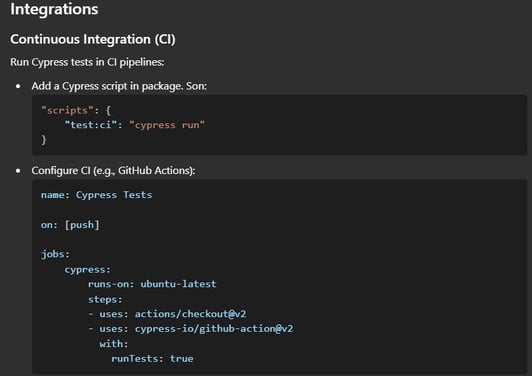

Conclusion
Cypress is an essential tool for modern web testing. By following best practices and leveraging its robust features, you can ensure your application is thoroughly tested and reliable. Keep iterating on your tests and refining your processes to get the most out of Cypress.
